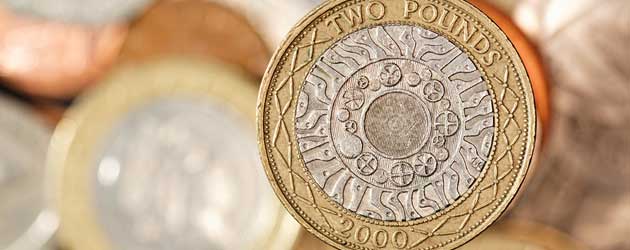GBP/AUD Exchange Rate to Drop Further on UK GDP Contraction?
The Pound Australian Dollar (GBP/AUD) exchange rate is currently lingering around an almost-5-year low as a risk-on trading environment supports the Australian Dollar (AUD) while the Pound (GBP) succumbs to cost-of-living related headwinds.
Looking ahead, analysts forecast a fall in the UK’s GDP tomorrow, which is likely to dent Sterling sentiment. If the data prints as expected, the GBP/AUD downtrend may continue.
At the time of writing, GBP/AUD is trading at A$1.7177, down 0.4% from today’s opening levels.
Pound (GBP) to Sustain Losses on Economic Downturn?
The Pound is already trading broadly lower today amid domestic inflationary pressures, energy concerns and discord between UK politicians and the Bank of England (BoE).
UK cost-of-living worries have dominated headlines consistently over the past week as businesses as households recount the difficulties they’re having in paying bills and meeting basic needs. In the spotlight are energy bills, which yesterday were forecast to increase to over £4,200 in 2023.
Also weighing upon Sterling are statements from UK prime ministerial candidates Liz Truss and Rishi Sunak, saying they may curb the Bank of England’s authority should either of them be elected.
In response to such intimations, BoE Governor Andrew Bailey has said:
‘The competitiveness of the UK financial sector which [new reforms] are aimed at enhancing, depends on [regulatory independence]. Anything that would weaken the independence of regulators would undermine the aims of the reforms.’
Into tomorrow, analysts predict that the UK’s economic output will have fallen in June: a poll of economists forecast a GDP contraction of 1.3%.
Furthermore, quarterly data is also expected to mark an economic slowdown. While the expected decline would be partly due to the impact of the Jubilee, retail sales also fell in Q2.
If the release prints as forecast, GBP is likely to extend its fall into Friday’s session.
Australian Dollar (AUD) Firms on Risk-On Trading Sentiment
The Australian Dollar is trading broadly higher against its peers, though struggles to sustain gains across the board.
Relative AUD strength is likely derived from a stronger risk appetite in the currency markets, as US inflationary pressures weaken. While a fall in the CPI dented demand for the US Dollar, it indicates that global prices may be on the verge of easing.
Chinese data published during Wednesday’s Asian session failed to dent the ‘Aussie’, despite printing below expectations. Inflation in the world’s second-largest economy hit 2.7% in the year to July, missing forecasts of a rise to 2.9%.
Looking ahead, a lack of AU data at the end of the week leaves the Australian Dollar exposed to external factors such as trading relationships. Negotiations between China and Australia over the Chinese imprisonment of two Australian journalists may lend AUD tailwinds if progress appears to be imminent.
When asked recently about the situation, China’s ambassador to Australia, Xiao Qian said he hoped the ‘issues on the table will be gradually solved.’ However, Qian also warned that the opportunity to reset chilly relations between Australia and China left no room for compromise on the issue of Taiwanese sovereignty.


Comments are closed.